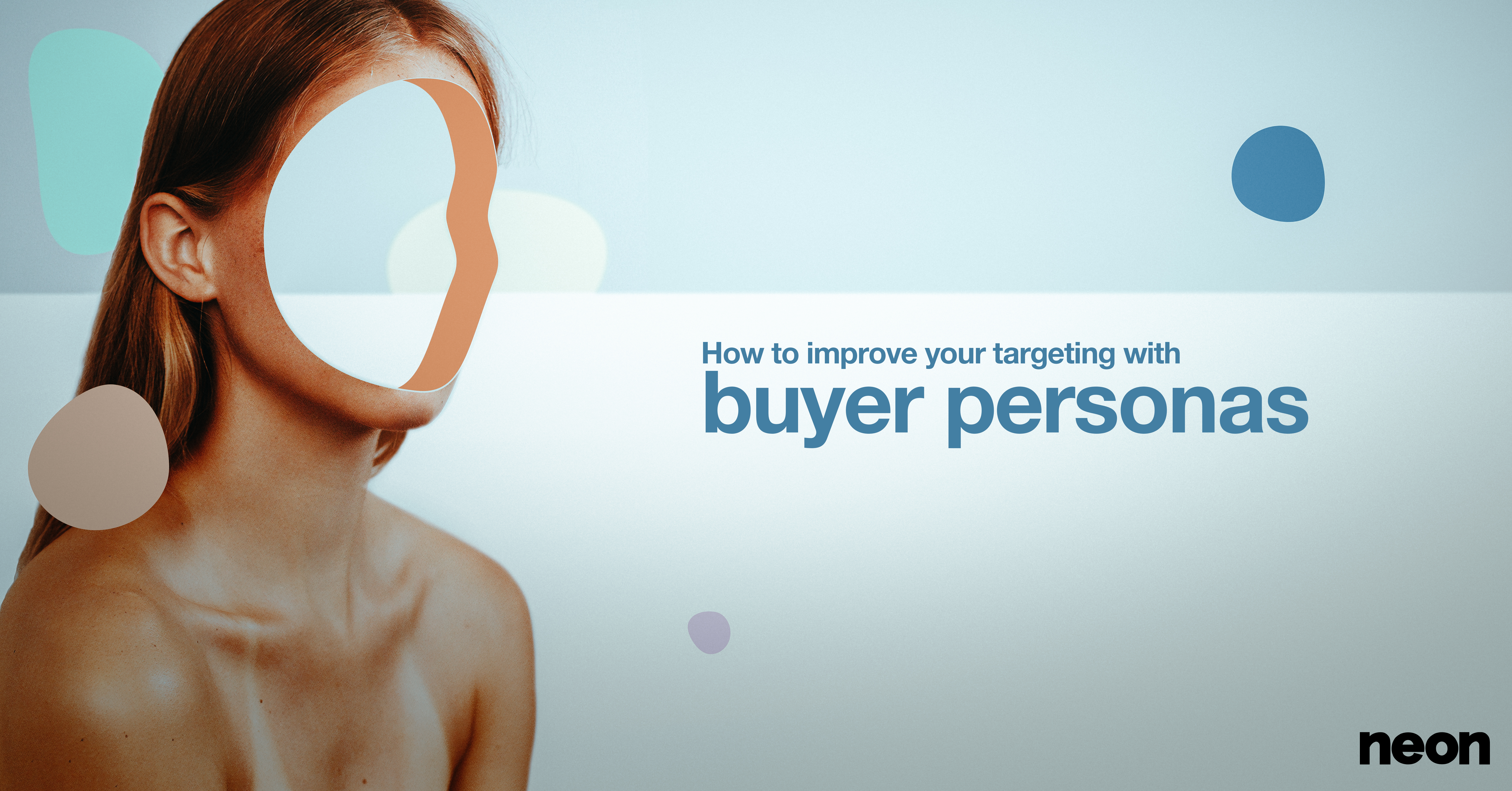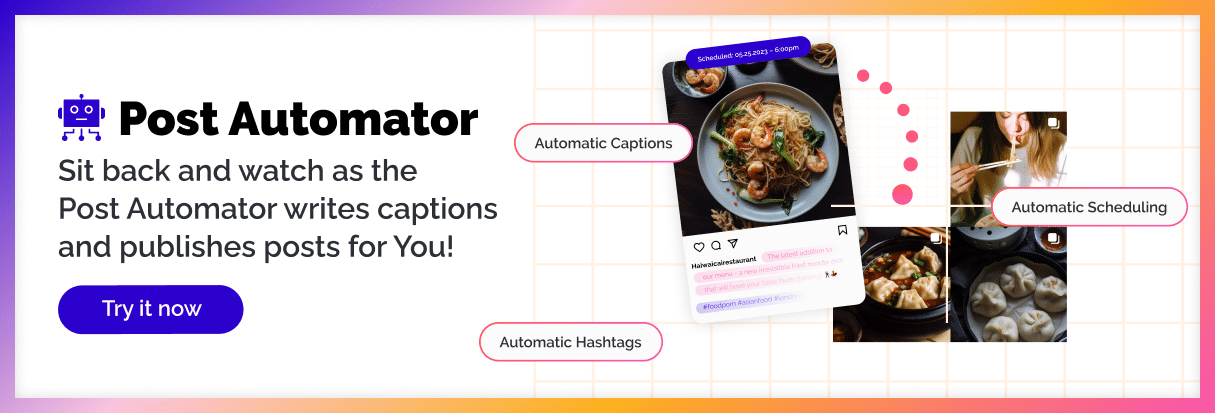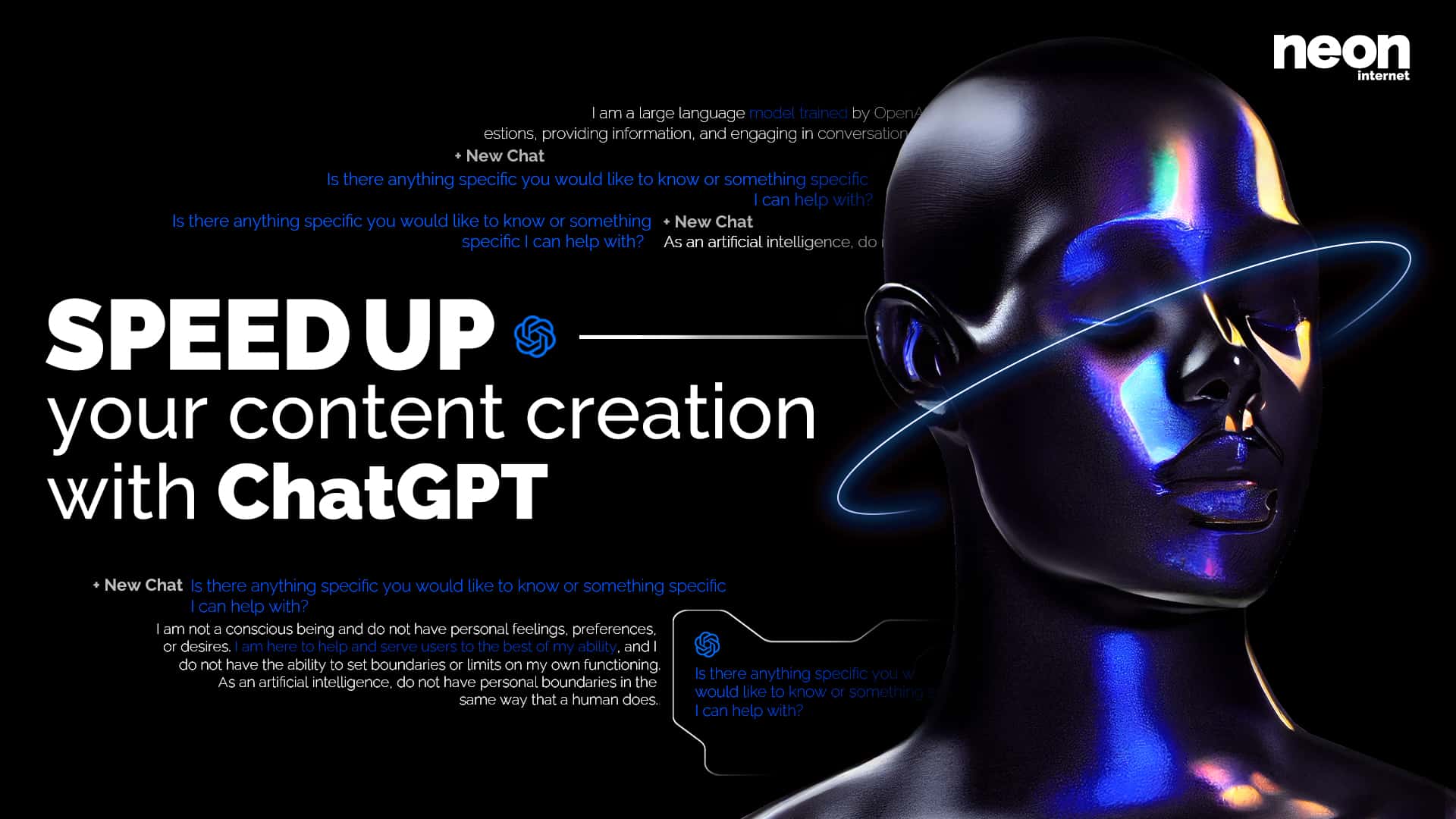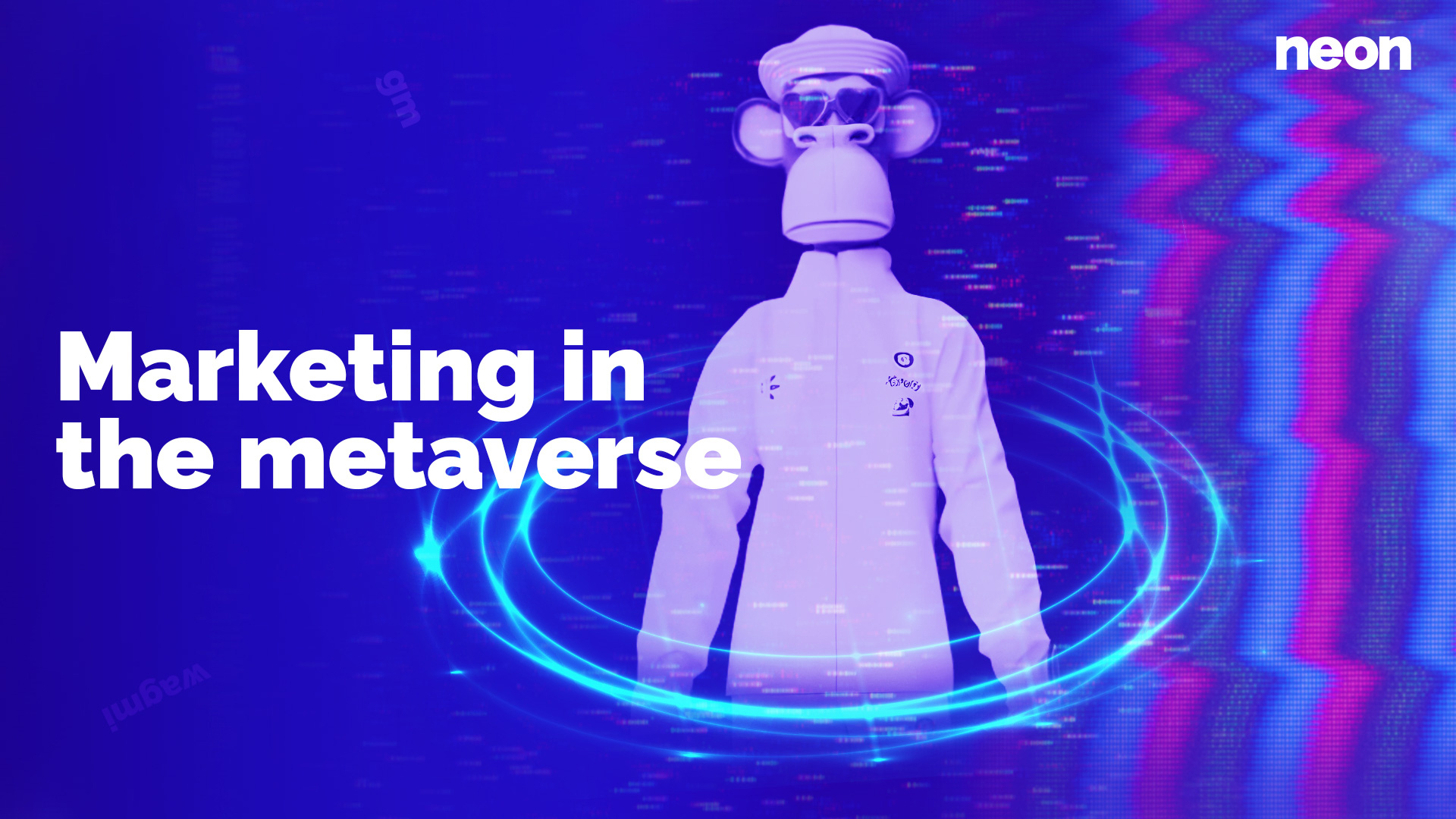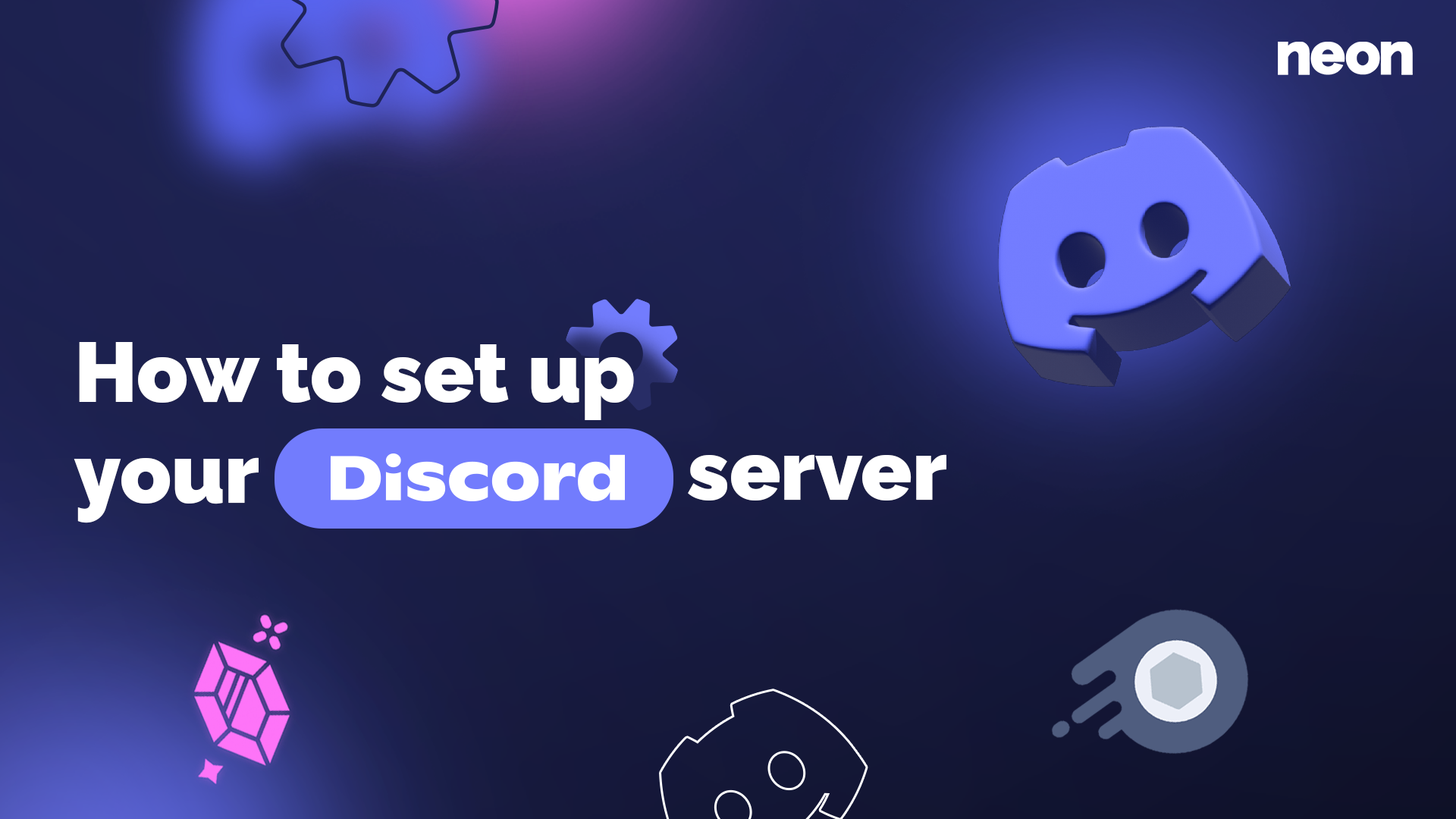A buyer persona is a semi-fictional representation of your ideal customer based on market research and real data about your existing customers.
–Hubspot.com
What makes modern online advertising technologies so powerful is that they allow for extremely precise targeting and personalization. All too often, however, these possibilities are wasted by neglecting the systematic use of said targeting and not tailoring communication to potential clients’ needs. Understanding your potential customers’ lifestyles, online behavior, personality, and expectations is crucial to break through the noise of impersonal marketing communication. We use different social media platforms, browse on different devices and our online behavior and preferences are as diverse as our real-life personalities. So where to begin the process of understanding thousands of people that we don’t even know? The answer is buyer personas (aka marketing personas).
What is a buyer persona?
A buyer persona is a semi-fictional representation of your ideal customer meant to gain a better understanding of their online behavior. In order to be successful, you must be able to understand your customers in a more humane and lifelike context to get a feeling for their personality, expectations, and challenges. If your data allows for it, you can start building a buyer personas based on existing clients. Try to find out who your existing customers are: Is there a tendency towards male or female? Is there a certain age demographic that stands out? Can you identify a specific common interest or behavioral pattern? The more you can learn about them, the better.
This data is used to put together a personality profile to help you improve your communication by learning which platforms to use, adapting your style, content, message, and tone to your target audience.
After doing your research and putting it together, your buyer persona could look something like our persona for online marketing courses:
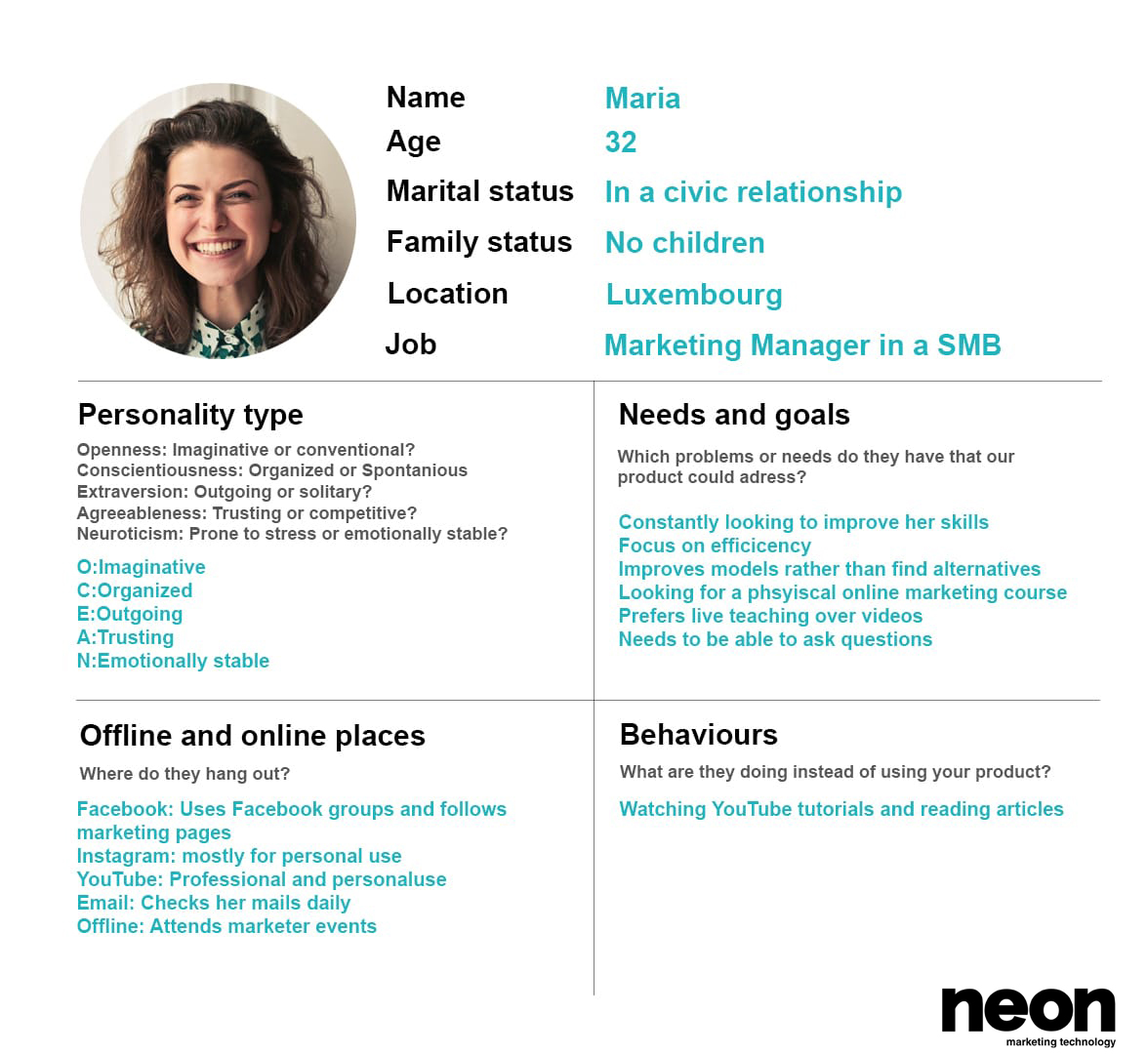
Download our Persona template now
and start drafting your own! 🙂
What kind of information are we looking for?

The first type of data you should consult are demographic factors like:
- Age
- Gender
- Education
- Family/marital status
- Geographic location
- Religion
Demographics are the most basic segmentation method but can be very powerful tools for successful communication. If you are running an online shop for children’s clothes, for example, it would make sense to target parents, right? Some platforms like Facebook offer ready-to-use “parents” targeting groups but even so, some parents might not indicate if they have children on social media.
This is where interests and behavior come into play. By understanding potential customers’ psychographics, we can reach them online by targeting audiences with specific interests or behaviors.

Here are a few examples of psychographic data that you should try to find out:
- What devices does your ideal customer use most?
- Which pages/channels are they likely to follow?
- Which type of content do they prefer?
- How and where do they do research before making a purchase?
Finding this kind of information can take a lot of testing, time and research. Some companies go even deeper down the rabbit hole.
The OCEAN model, for example, is used to determine a persons’ personality and predict their behavior. This technique has been used by Cambridge Analytica to help politicians win the elections but that’s too complex to cover in this blog post. If you’d like to know more about how Cambridge Analytica used OCEAN analysis in electoral campaigns, check out this video.
Where and how does your audience try to solve their problems?
If you can find out where your potential customers hang out on the internet, there’s a good chance you can reach them quite efficiently with the right content strategy. The ways how people use the internet strongly vary from one individual to another, which you must take into account when elaborating a strategy. Some people might consult Google to identify the best product which means you can reach them by SEO and SEA, others might be following blogs (like this one) or specific influencers which requires you to use a completely different approach.
In order to reach potential customers, it is crucial to understand where to find them and how they like to consume content. Some people prefer detailed e-book style guides, others prefer short and condensed infographics or videos. The type of content mainly depends on the channel your target audience is using, which is why you need to understand what type of content they expect from you and provide it. They can be searching Google or YouTube to solve their problems, reach out to their peers on Facebook and Twitter or loyally follow an Instagram account to soak up as much knowledge as possible. Find out what kind(s) of audience(s) generated sales for you and build your communication around them.
Where to find data to create a buyer persona?
The easiest and fastest source of data for your buyer persona are real-life examples. Talk to your peers about their interests and how they decide which products to buy online. Either way, you can always start by analyzing your own behavior and creating a buyer persona based on yourself. Which devices do you use and when do you use them? How do you use the internet to solve a problem? Where do you do research before buying something online?
For a more data-driven approach you can use the following tools to gather data about your past customers and social media followers:
- Facebook audience insights
- Instagram insights
- Google Analytics
- Customer surveys (check out Typeform.com)
- Sales and CRM data
- Your employees that have direct contact with customers
Using tools like Google Analytics can be overwhelming at first because it requires precise tracking and enough relevant data but is a very efficient way to learn more about your customers. If you’d like to know more about how to set up proper tracking, check out this article.
Final thoughts
Modern marketing is about creating a connection and providing value to your customers. Never forget that anyone can literally find thousands of other sellers within seconds. For businesses, this means that they must try and understand their customers as human beings, rather than brainless customers. By integrating buyer personas in your communication and product development process, you can actively work towards a more customer-oriented approach that prioritizes your different customers needs rather than lumping them all together. Even if business is done online, it is still an interaction between humans, so the more effort you put in to get to know the other person, the more likely you are to close a deal. What are you waiting for? Download our template here and get started.
